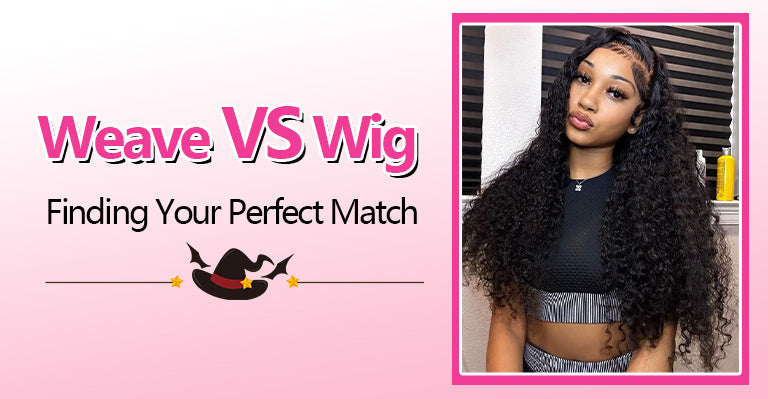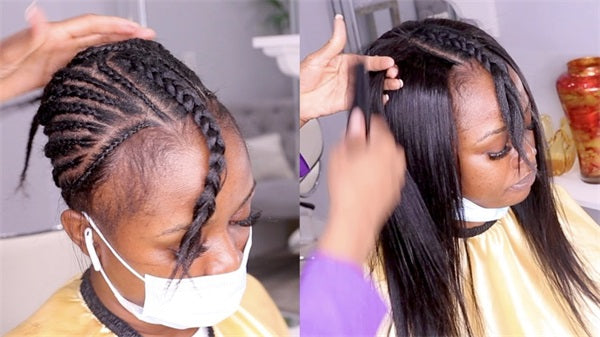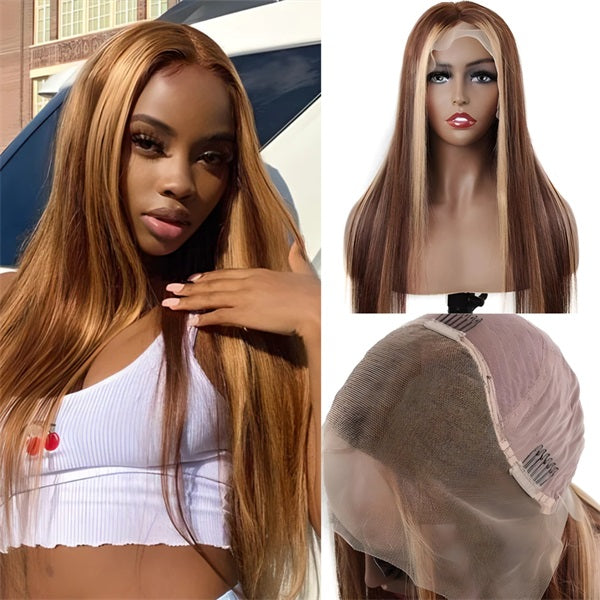Hair items offer ladies the flexibility to experiment with their looks effortlessly. Among the many options available, weaves and wigs stand out as popular choices for transforming one's hairstyle. Understanding the nuances between these two options can greatly aid in finding the perfect match for your desired aesthetic and lifestyle.

What is a Hair Weave?
A weave is a hair extension made from human or synthetic hair, which is sewn onto a weft manually or by machine. Subsequently, these wefts are sewn into natural hair to enhance or alter its appearance.
- Hair weaves can last for 6-12 weeks and can be worn while washing hair.
- Allows experimentation with various hairstyles without revealing the extensions, as they are directly sewn onto the scalp.
- With proper maintenance, weaves can last up to two months, saving time in styling.
- Weaves, when braided underneath the hair, shield it from external factors like sun damage and dry air, as well as the effects of styling procedures.
- Overly tight braids can cause scalp pain. Frequent tight braiding may lead to traction alopecia.
- Weave methods may not be suitable for individuals with low hair volume.
- Time-consuming installation, high cost, and increased maintenance requirements.

What is Weave Made Out Of?
1. Synthetic Hair: Manufactured from chemical fibers, synthetic weaves have a shorter lifespan and a less natural appearance, but they are cost-effective.2. Human Hair: Offering the most natural appearance and longer durability, human hair weaves can be styled using heat tools. Within this category, there are distinctions such as virgin human hair and Remy human hair.
- Remy Hair: This type of hair is methodically aligned to avoid tangling. High-quality "remy" hair is typically sourced from a single donor and harvested directly from a woman's head, cut into ponytails.
- Virgin Hair: This is 100% real human hair that has never undergone chemical processes like perming, dyeing, or bleaching during collection. This pure, unprocessed hair often originates from young women and is free from grays or split ends. Donors of virgin hair must have long, healthy, and voluminous hair.
What is a Wig?
A wig is a comprehensive hair accessory that envelops the entire head and is crafted from either synthetic or natural human hair. It involves attaching human hair to a cap, essentially resembling a head-covering. Wigs are available in a wide array of styles, lengths, and colors. Common wig types include lace wigs, headband wigs, wear go glueless wigs and v part wigs. You can get a deeper understanding of wigs by reading these articles:
1. Exploring Different Wig Textures: A Comprehensive Guide
2. 10 Different Wig Types Explanation

- More suitable for individuals experiencing hair loss or having naturally low hair volume. Wigs can protect the growth of natural hair.
- Greater variety in styling options with numerous colors and styles, enabling better adaptation to current fashion trends.
- Adjustable wig cap sizes ensure no discomfort from squeezing or tightness. The wig cap serves as a protective barrier between the scalp and the wig, preventing any friction.
- Maintaining synthetic wigs can be challenging due to the tendency of synthetic fibers to tangle. Human hair wigs require care similar to natural hair, which can be somewhat challenging for those leading busy lives.
- Swimming while wearing a wig can be challenging and demands more preparation.
How Long Do Wigs Last?
The longevity of your wig depends on both the care you provide and the material of the wig. Typically, synthetic wigs last around 6 months, while human hair wigs can persist for a span between 6 months to a year. Through meticulous care and attention, it's plausible to extend the lifespan of your wig beyond these estimated time frames.
Weave Vs. Wig: What is the Main Difference
While they might appear similar when worn and are both types of hair extensions distinct from one's natural hair, the significant contrast lies in the attachment method. Weaves are sewn or occasionally glued directly onto one's natural hair, typically secured beneath with cornrows, using thread. Conversely, a wig is woven onto a lightweight net structure instead of being directly affixed to the head, allowing it to be worn on and off, similar to wearing a hat.Wig Vs. Weave: How to Choose
The decision between weaves and wigs ultimately depends on your personal preferences, lifestyle, and styling goals. Here are some factors to consider when making your choice:
1. Budget
Weaves can be more expensive due to the professional installation and maintenance they require. Wigs offer a more budget-friendly option.
2. Time and Effort
Weaves take more time to install and maintain, while wigs are quick and easy to put on.
3. Longevity
Weaves last longer, while wigs are more temporary.
4. Styling Preferences
Consider your desired hairstyle, as weaves offer more versatility in styling, whereas wigs are better for quick style changes.
5. Hair Health
If you want to protect your natural hair from damage or are dealing with hair loss, wigs might be the better choice.









